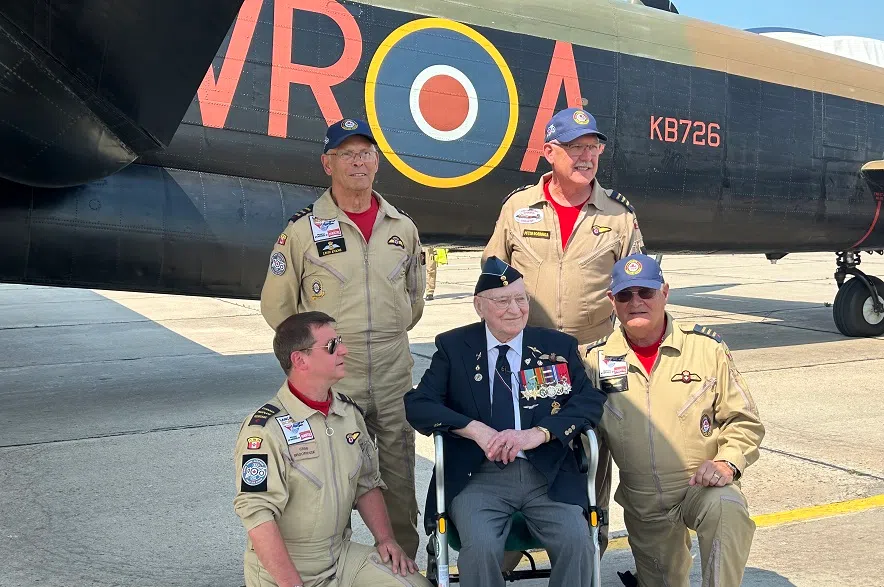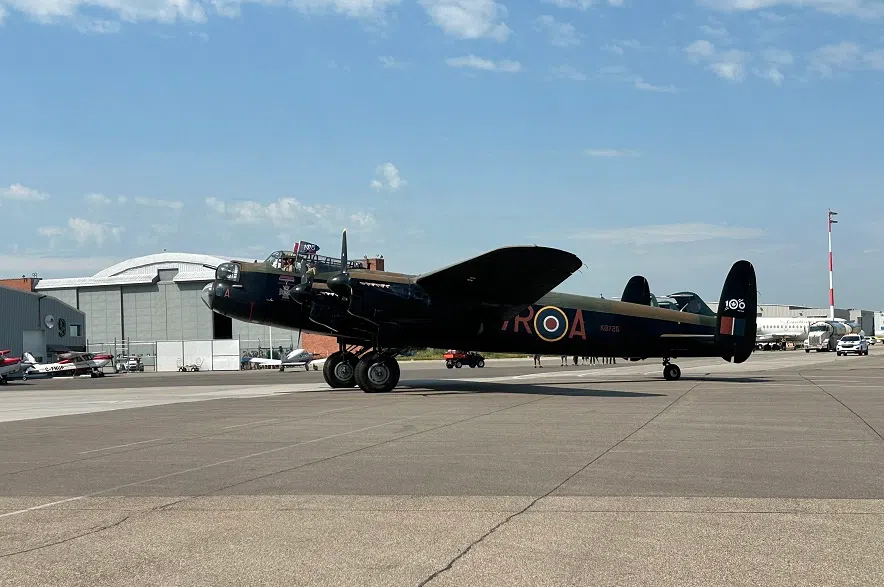Aviation fans in Saskatoon got a nice surprise on Thursday afternoon when a Lancaster bomber from the Second World War landed at the Saskatoon Airport to be displayed at the Saskatoon Aviation Museum for a couple of hours.
The plane is one of only two remaining in the world that can fly – it’s based in Hamilton most of the year.
David Rohrer, president and CEO of the Canadian War Plane Museum, called it an honour to be back in Western Canada showcasing this aircraft to people in Saskatchewan.
“This is a Canadian-built Lancaster, and the last flying Canadian-built Lancaster of 430 that were built. Canada was the only country to build Lancasters outside the U.K.,” Rohrer explained.
“Back in 1941, Canada was the only country that had its own bomber group, within bomber command commanded by Canadians, with Canadian crews flying Canadian built Lancasters. We punched way above our weight.”
According to Rohrer, over 120,000 people served in the bomber command with Canada and its allies. He said most of those in the bomber command had to fly at least 30 operations to finish their tour. Only 40 per cent of people would survive it.
Canada lost over 10,000 people in the Second World War who worked in the bomber command.
One of the pilots who survived was 102-year-old veteran Reg “Crash” Harrison.
Harrison was a pilot in the Canadian military during the Second World War and survived four plane crashes.
He flew the Lancaster at one point and was shocked to see the plane land in Saskatoon on Thursday.
“I’ve had a lot of surprises in my life, but this one sort of tops them all,” he said. “I guess you could say lady luck was with me.”
According to Harrison, most crew members flying inside the planes died in their first crash.
“I’m just very fortunate (to be here),” he added.
Rohrer called the Lancaster aircraft a priceless item because of what it represents. The restoration work of the aircraft began in 1977 and took 11 years for the museum to complete.
During the Second World War, over 10,000 people worked at a site near Pearson International Airport in Toronto and built a Lancaster per day.
Rohrer was proud to tell people about the significance of the Lancaster.
“To see families and new generations coming with their grandfathers’ log books is just an honour for us to be able to (explain) that,” Rohrer said.
“It’s an honour for us to be able to do that and to reconnect and fill in the blanks – that’s their heritage as well as ours.”
Rohrer credits the plane for helping Canada and its allies winning the war, even though it had no navigation and no autopilot.
“It made a difference in taking the fight to Nazi Germany. It did turn the tide in the war,” he said.












